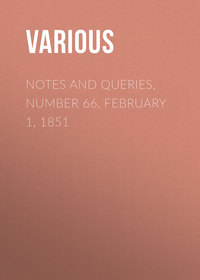Kitabı oku: «Notes and Queries, Number 66, February 1, 1851», sayfa 2
Various
Bir şeyler ters gitti, lütfen daha sonra tekrar deneyin
Türler ve etiketler
Yaş sınırı:
0+Litres'teki yayın tarihi:
07 mayıs 2019Hacim:
60 s. 1 illüstrasyonTelif hakkı:
Public Domain